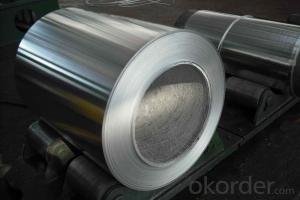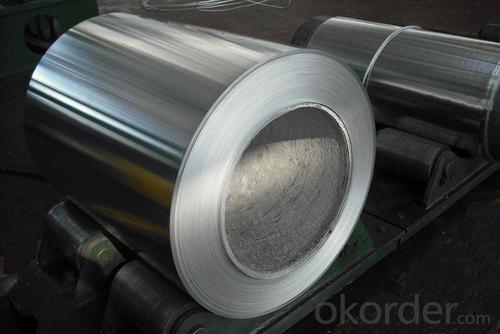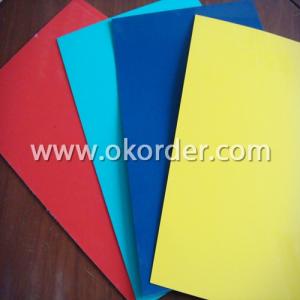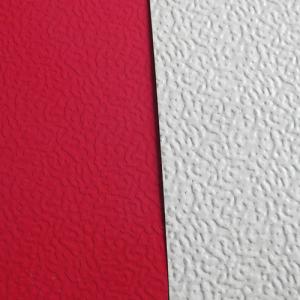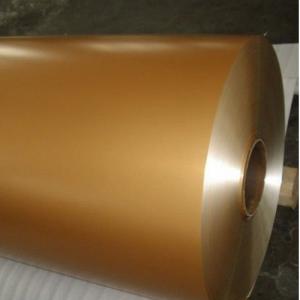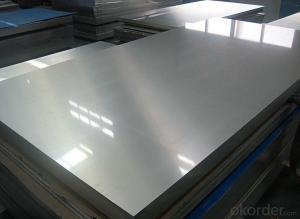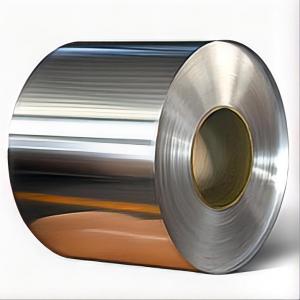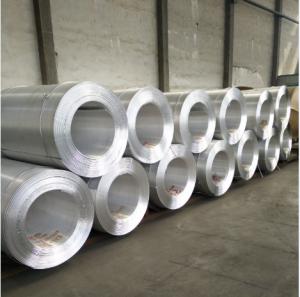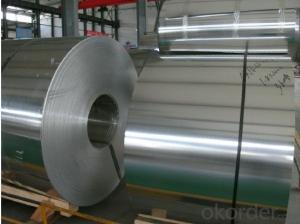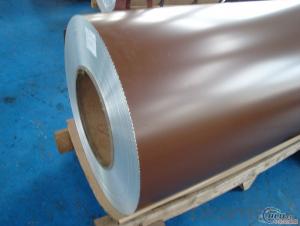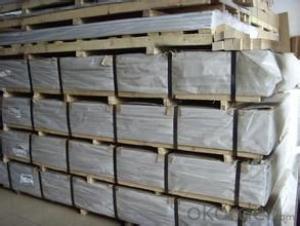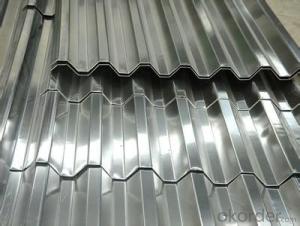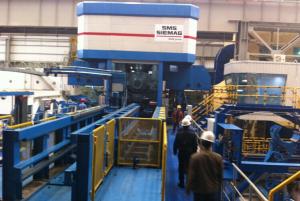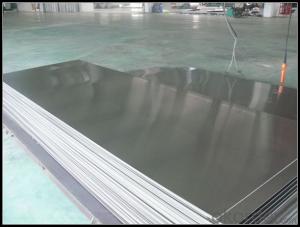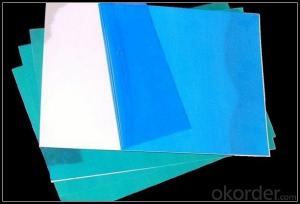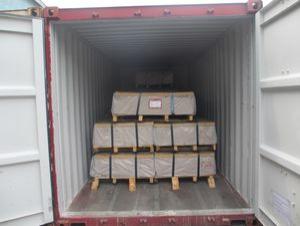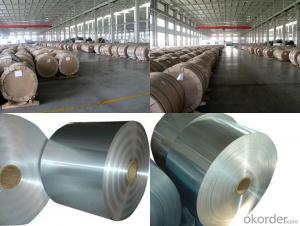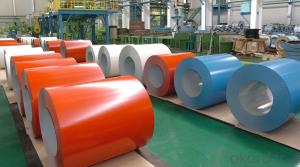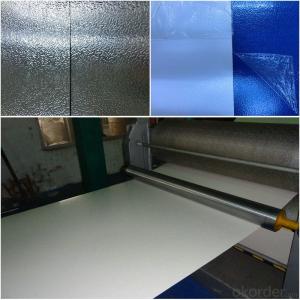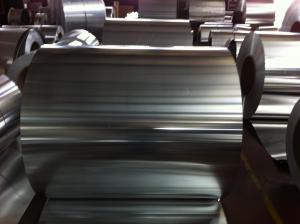Coiled Aluminum Sheet 1.8mm
- Loading Port:
- China Main Port
- Payment Terms:
- TT OR LC
- Min Order Qty:
- -
- Supply Capability:
- -
OKorder Service Pledge
OKorder Financial Service
You Might Also Like
High Quality and Factory Price Aluminum Coil
Specifications
Grade
| 1000 Series: 1050 1060 1070 1100 1200 1235 etc. 3000 Series: 3003 3004 3005 3104 3105 3A21 etc. 5000 Series: 5005 5052 5083 5086 5154 5182 5251 5754 etc. 6000 Series: 6061 6063 6082 6A02 etc. 8000 Series: 8006 8011 8079 etc. |
Thickness | 0.05~10mm |
Width | <1600mm |
Color | Metallic, Solid, RAL or by customer requirements |
Coating paint: | PVDF(Polyvinylidene Fluoride), PE(Polyester ) |
Coating thickness | as per customer’s request |
Gloss | 10-90%(EN ISO-2813:1994) |
Total coating thick | Polyester18~27micron(EN ISO-2360:1995) PVDF27 ~35micron(EN ISO-2360:1995) |
Coating hardness | 2H |
Protective film | PVC film, Colorless transparent or White-black |
Adhesion | 5B (EN ISO-2409:1994) |
Impact resistance | No cracking and peeling (A.S.T.M D2794-1993) |
Flexibility (T-bend) | 0T- 2T |
Temper | H16, H18, H24, H26, H26 |
Certification | ISO9001:2000, CE, SGS |
Coil's standard diameter | 1100mm |
Inner Diameter | 405mm/505mm |
Coil's standard weight | 2000kgs |
Payment | L/C ,T/T |
- Q: How are aluminum coils joined or welded?
- Aluminum coils can be joined or welded using various methods depending on the specific application and desired outcome. Some common methods include: 1. Mechanical fastening: This involves using bolts, screws, or rivets to physically fasten the aluminum coils together. Mechanical fastening is a simple and cost-effective method, suitable for joining thin coils or for temporary connections. 2. Adhesive bonding: Adhesive bonding involves using specialized adhesives to bond aluminum coils together. This method provides a strong and durable joint, with the added advantage of distributing stress evenly across the entire bond area. Adhesive bonding is commonly used in applications where aesthetics, weight reduction, or vibration dampening are important considerations. 3. Resistance welding: Resistance welding utilizes an electric current to generate heat and pressure at the joint, effectively welding the aluminum coils together. This method is particularly suitable for high-speed production lines and can provide a strong and reliable joint. However, it requires specialized equipment and is not suitable for all types of aluminum alloys. 4. Laser welding: Laser welding is a precise and efficient method that uses a laser beam to melt and join the aluminum coils. This technique allows for precise control of heat input, resulting in minimal distortion and excellent weld quality. Laser welding is commonly used in industries where high precision and aesthetic appearance are crucial, such as automotive and aerospace. 5. Friction stir welding: Friction stir welding is a solid-state joining process that uses a rotating tool to generate heat and friction, effectively welding the aluminum coils together without melting the material. This method produces strong and high-quality welds with minimal distortion and no need for additional filler material. Friction stir welding is commonly used in industries where excellent mechanical properties and high productivity are required, such as shipbuilding and railway construction. Overall, the choice of joining or welding method for aluminum coils depends on factors such as the desired joint strength, application requirements, production volume, and available equipment and expertise.
- Q: What are the main causes of aluminum strip rolling?
- Also, what types of mill, simple four roll or roll type control of CVC and HC mills?
- Q: Can aluminum coils be used in automotive radiators?
- Yes, aluminum coils can be used in automotive radiators. In fact, aluminum is one of the most common materials used in radiator construction due to its excellent heat transfer properties and lightweight nature. Aluminum coils are able to efficiently dissipate heat, making them a popular choice for automotive applications. Additionally, aluminum is resistant to corrosion, which is crucial for a component that comes into contact with coolant. The use of aluminum coils in automotive radiators helps improve the overall efficiency and performance of the cooling system while reducing the weight of the radiator, ultimately contributing to better fuel economy and overall vehicle performance.
- Q: Its got probably 330 horses right now with aluminum heads what do you think it be approx.
- Head material does NOTHING. It is the DESIGN of the heads that is important. WHAT kind of car is this??Aluminum heads can crack easier depending upon WHO makes the heads and for what application. Expect NO real improvement. There are OTHER considerations, like intake system. cam shoice, compression ratio, and other factor5s. GOOD LUCK!!
- Q: Can aluminum coils be used in the production of electrical cables?
- Yes, aluminum coils can be used in the production of electrical cables. Aluminum is a widely used material in the electrical industry due to its excellent electrical conductivity and lightweight properties. Aluminum coils are commonly used to manufacture power cables, building wires, and other electrical conductors. They have been proven to be a cost-effective alternative to copper coils, which are more expensive but possess higher electrical conductivity. The use of aluminum coils in electrical cables can help reduce the overall weight of the cables, making them easier to install and handle. Additionally, aluminum coils have good corrosion resistance, making them suitable for outdoor and underground applications. However, it is important to note that aluminum has a lower tensile strength compared to copper, so proper design considerations and installation techniques must be taken into account to ensure the longevity and reliability of aluminum-based electrical cables.
- Q: Can aluminum coils be used in kitchen appliances?
- Kitchen appliances can indeed utilize aluminum coils. Due to its remarkable thermal conductivity and resistance to corrosion, aluminum is extensively employed in the production of kitchen appliances. It finds frequent application in refrigerators, air conditioners, and other devices that necessitate efficient heat transfer. Lightweight and enduring, aluminum coils effectively disperse heat, rendering them ideal for a wide array of kitchen appliances.
- Q: What is the weight of an aluminum coil?
- The weight of an aluminum coil is subject to variation based on its dimensions, gauge, and length. Generally, aluminum coils tend to range from 1,500 to 6,000 pounds in weight. Nevertheless, it is important to acknowledge that the weight of individual aluminum coils may differ, either exceeding or falling short of these figures, owing to the unique demands and specifications of the coil.
- Q: What are the different alloy compositions used in aluminum coils?
- There are several different alloy compositions that are commonly used in aluminum coils, each with their own unique properties and applications. Some of the most frequently used alloy compositions include: 1. 1000 series alloys: These alloys are almost pure aluminum (with a minimum aluminum content of 99%), making them highly ductile and corrosion-resistant. They are often used in applications where high formability and good electrical conductivity are required, such as in electrical wiring and packaging. 2. 3000 series alloys: These alloys typically contain small amounts of manganese, making them stronger and more corrosion-resistant than the 1000 series alloys. They are commonly used in applications such as cooking utensils, chemical equipment, and decorative trim. 3. 5000 series alloys: These alloys contain magnesium as the primary alloying element, which significantly enhances their strength and hardness. They are known for their excellent resistance to corrosion and are often used in marine environments, as well as in the automotive and aerospace industries. 4. 6000 series alloys: These alloys are alloyed with magnesium and silicon, which results in improved strength, heat treatability, and weldability. They are commonly used in applications such as architectural and structural components, as well as in transportation and electrical conductors. 5. 7000 series alloys: These alloys are primarily composed of zinc as the main alloying element, which gives them exceptional strength and toughness. They are commonly used in high-stress applications such as aircraft structural components and sporting equipment. It's important to note that there are many other alloy compositions used in aluminum coils, each tailored to specific requirements and applications. The choice of alloy composition depends on factors such as desired strength, corrosion resistance, formability, and cost considerations.
- Q: Are aluminum coils prone to corrosion?
- Aluminum coils have a tendency to corrode, as aluminum is a reactive metal that readily develops a protective oxide layer upon contact with oxygen. Nevertheless, certain environmental elements like moisture, salt, or corrosive substances can compromise this oxide layer. Consequently, corrosion may gradually manifest on the surface of aluminum coils. To mitigate this risk, regular maintenance and appropriate care, such as cleaning and applying protective coatings, can be beneficial.
- Q: How do aluminum coils perform in extreme temperatures?
- Aluminum coils are known for their excellent performance in extreme temperatures. They have a high melting point of 660 degrees Celsius (1220 degrees Fahrenheit), making them highly resistant to heat. Additionally, aluminum has a low coefficient of thermal expansion, which means it can withstand rapid changes in temperature without warping or cracking. This makes aluminum coils a reliable choice for applications in both high and low-temperature environments.
Send your message to us
Coiled Aluminum Sheet 1.8mm
- Loading Port:
- China Main Port
- Payment Terms:
- TT OR LC
- Min Order Qty:
- -
- Supply Capability:
- -
OKorder Service Pledge
OKorder Financial Service
Similar products
Hot products
Hot Searches
Related keywords
